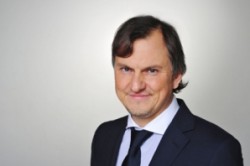
Opposition Division's of EUIPO rejection of the European Union trademark
In recent decision of the Opposition Division of EUIPO it was decided to reject a European Union trademark in its entirety due to the likelihood of confusion.
On August 31, 2016 the decision of the Opposition Division of the European Union Intellectual Property Office (further below EUIPO) was made regarding the rejection of registration of the European Union trademark due to the likelihood of confusion for trademarks. The dispute arose between the opponent WhatsApp, Inc. (owner of the earlier trademark) and the applicant WhosApp GmbH (owner of the contested sign).
The opposition was filed on the basis of the Article 8(1)(a) and (b) of EUTMR referencing the possibility of the likelihood of confusion for trademarks. The likelihood of confusion for trademarks can exist if the overall impression of compared trademarks can be considered as identical of similar in the eyes of the relevant public. The comparison was made between the earlier word mark “WHATSAPP” and the contested word mark “WhosApp”.
In this case both European Union trademarks are registered in the same classes, namely the classes 9, 38 and 42. Moreover, the goods and services that are registered for both trademarks are either similar or identical in all classes, thus in terms of the similarity of the goods and services there can exist a likelihood of confusion for European Union trademarks.
As both registered European Union trademarks are word marks, the word itself is protected, therefore neither the colours or font are being considered in this opposition, but only the word itself visually, aurally and conceptually when determining the level of similarity. Visually both marks consist of one similar length word where the beginning and the end of marks are identical. Moreover, it has to be taken into account the consumers generally tend to focus on the beginning of a sign. Aurally also the pronunciation of both European Union trademarks in comparison is similar and almost identical as only the small part in the middle of the mark differs. Both registered European Union trademarks are similar as regards their pronunciation, length, rhythms and intonation. Conceptually neither of the marks has a meaning, therefore this aspect does not influence the determination of the similarity. Even more, the last part of both European Union trademarks is “app” that can be considered as short version for “application”.
Considering all facts mentioned by the Opposition Division of EUIPO it is clear that there exists a likelihood of confusion for EU trademarks. Earlier mark has been extensively used and enjoys enhanced scope of protection, but there was no need for examining this claim as the similarity of both European Union trademarks was already proven by the visual, aural and conceptual similarity of marks as well as with identical or similar goods and services for which both European Union trademarks are registered, thus resulting a similar overall impression of marks in the eyes of relevant public.
Therefore, the opposition was successful on the basis of the ground of Article 8(1)(b) EUTMR and no examination of the Article 8(1)(a) was necessary. It was decided to reject the European Union trademark “WhosApp” application in its entirety.
To find out more about the trademark registration in the European Union or the opposition of EU trademarks, please contact our English speaking lawyers at info@gencs.eu.
T: +371 67 24 00 90
F: +371 67 24 00 91



